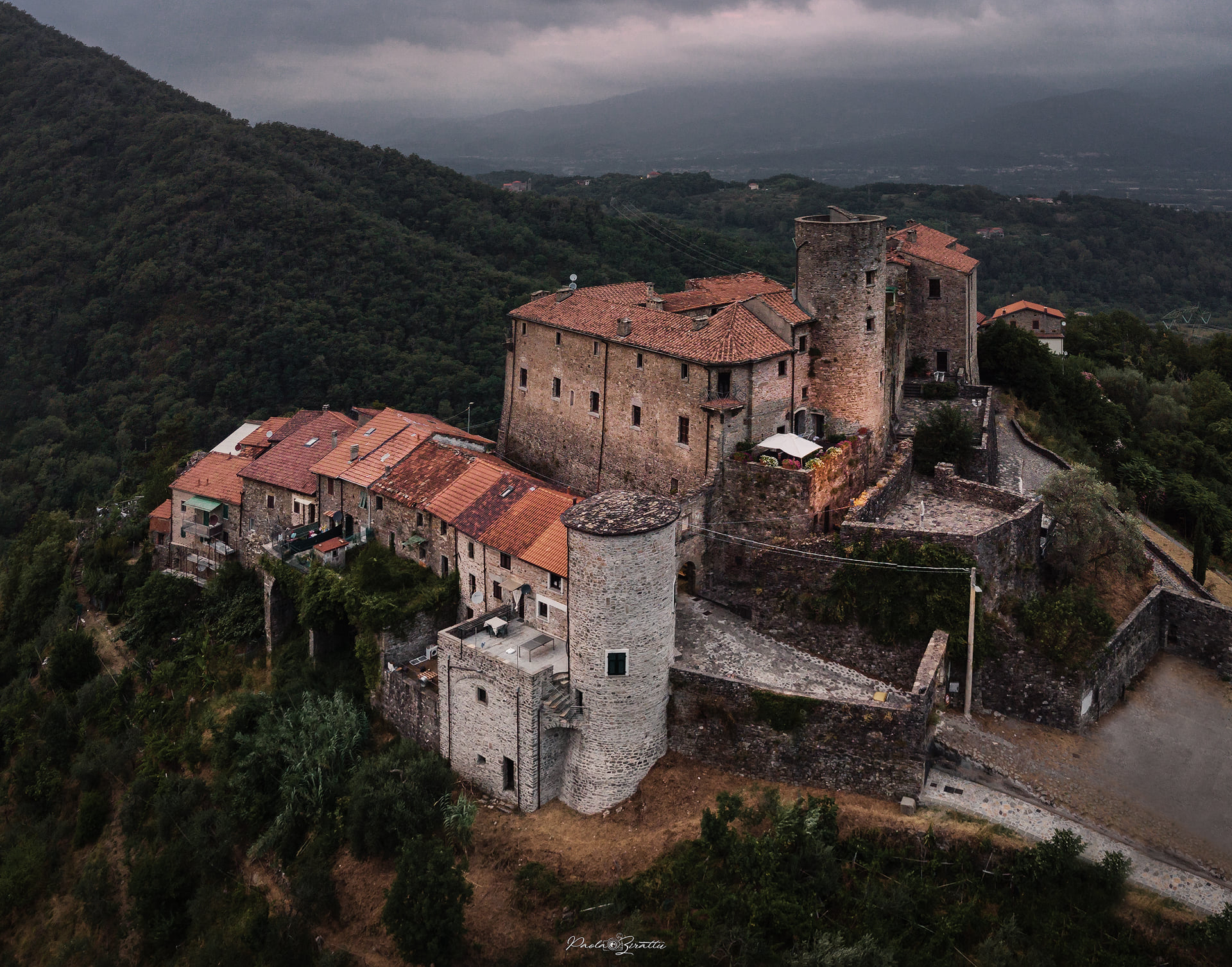
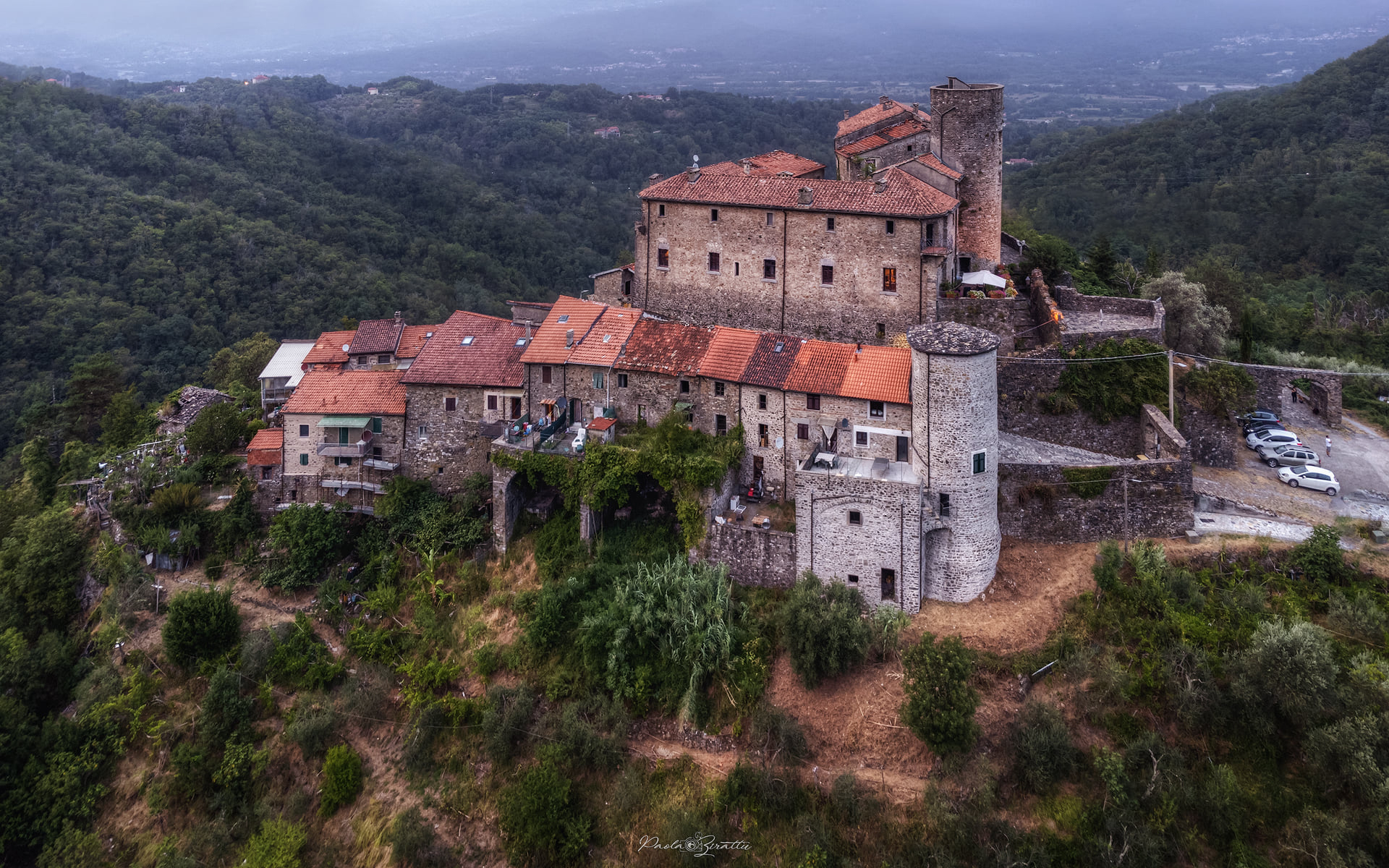
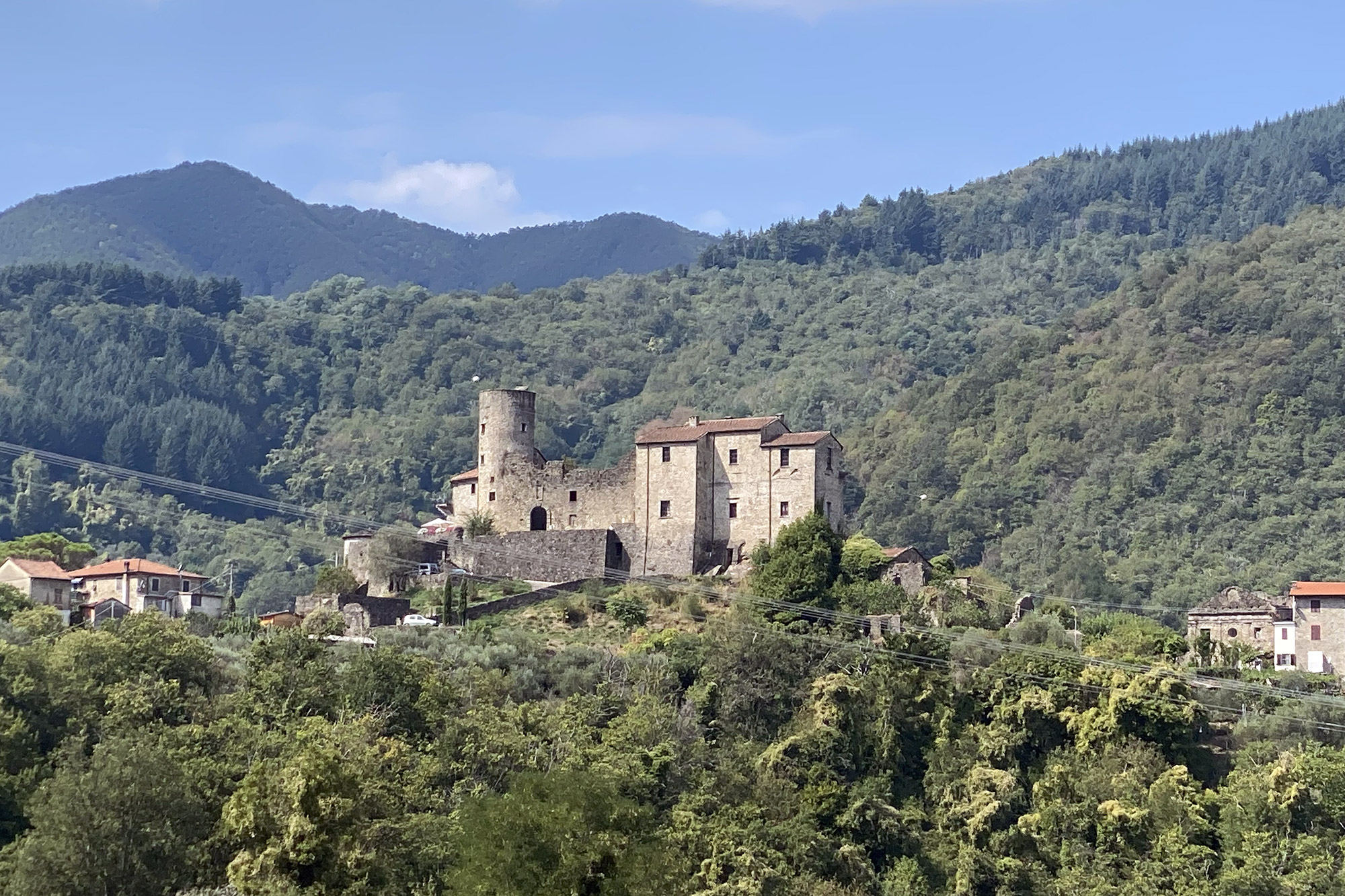
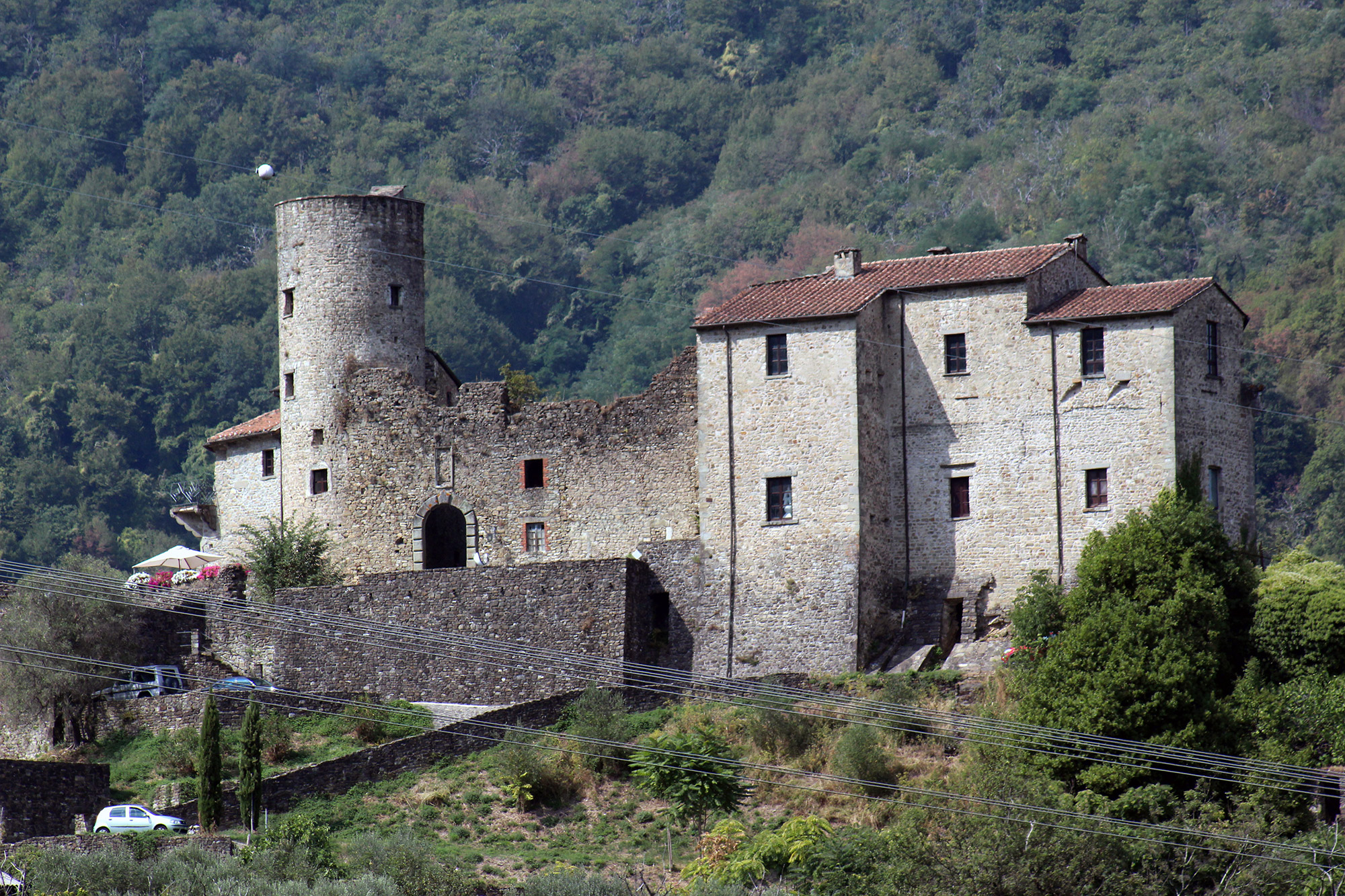
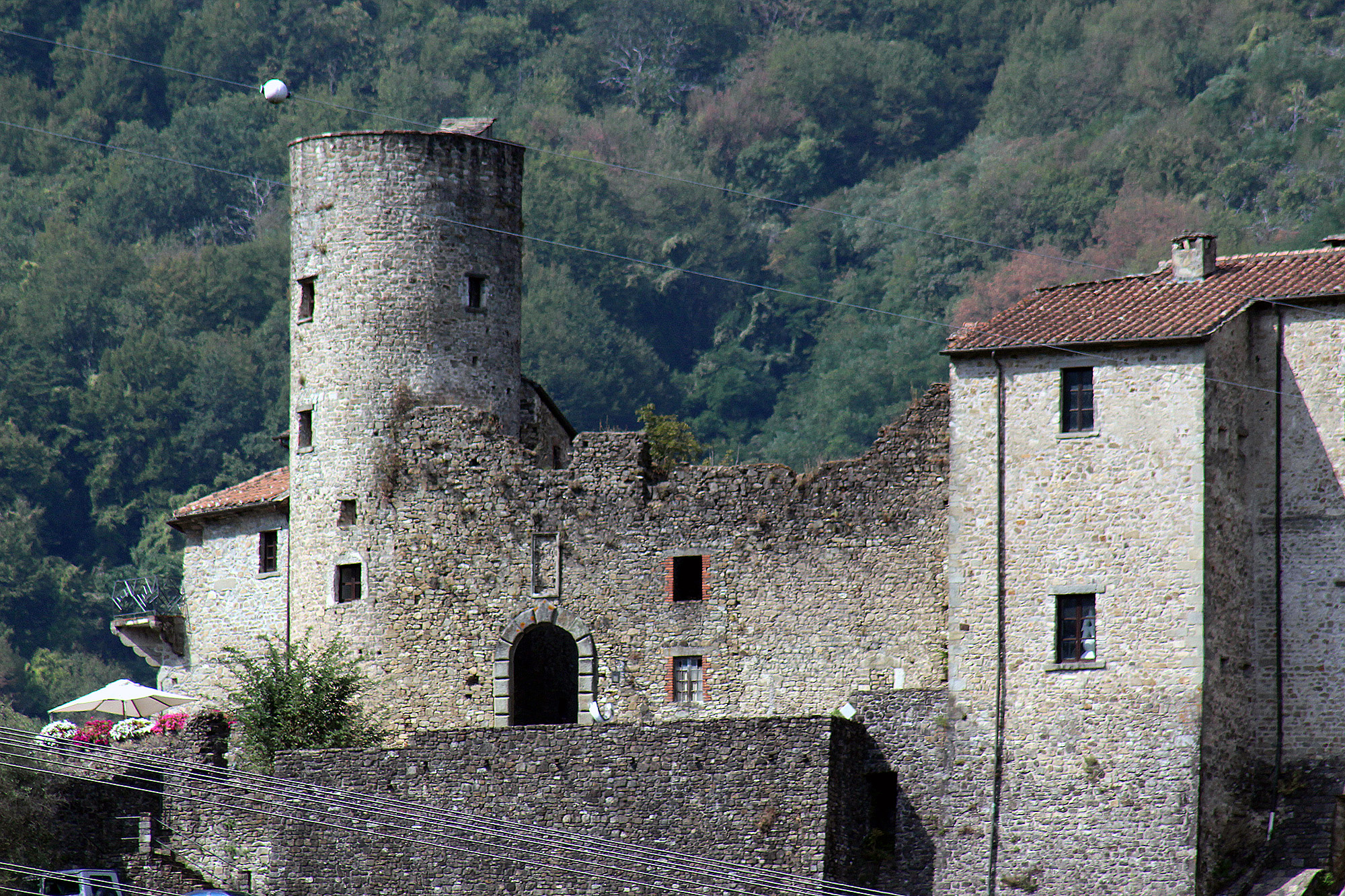
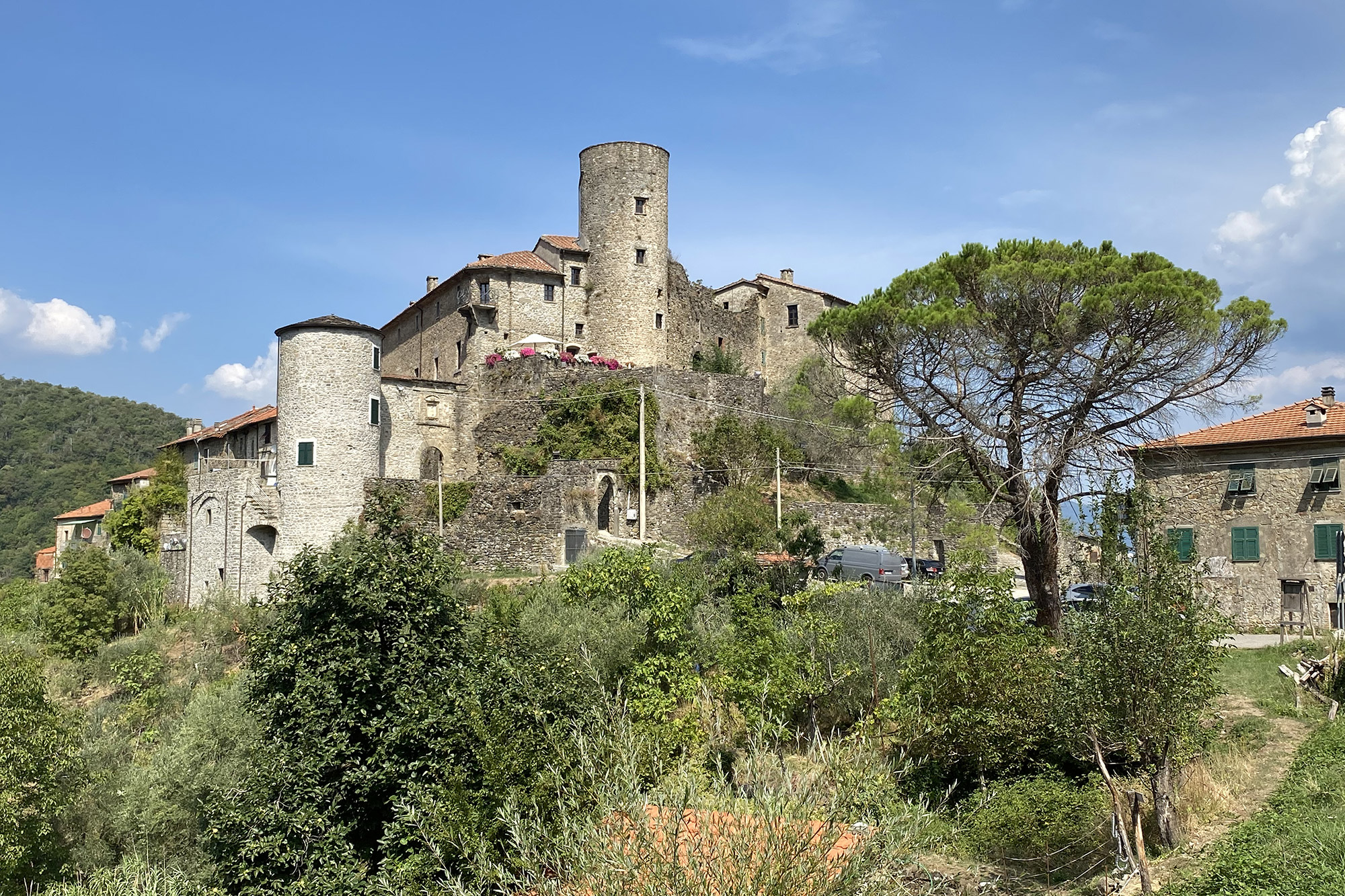
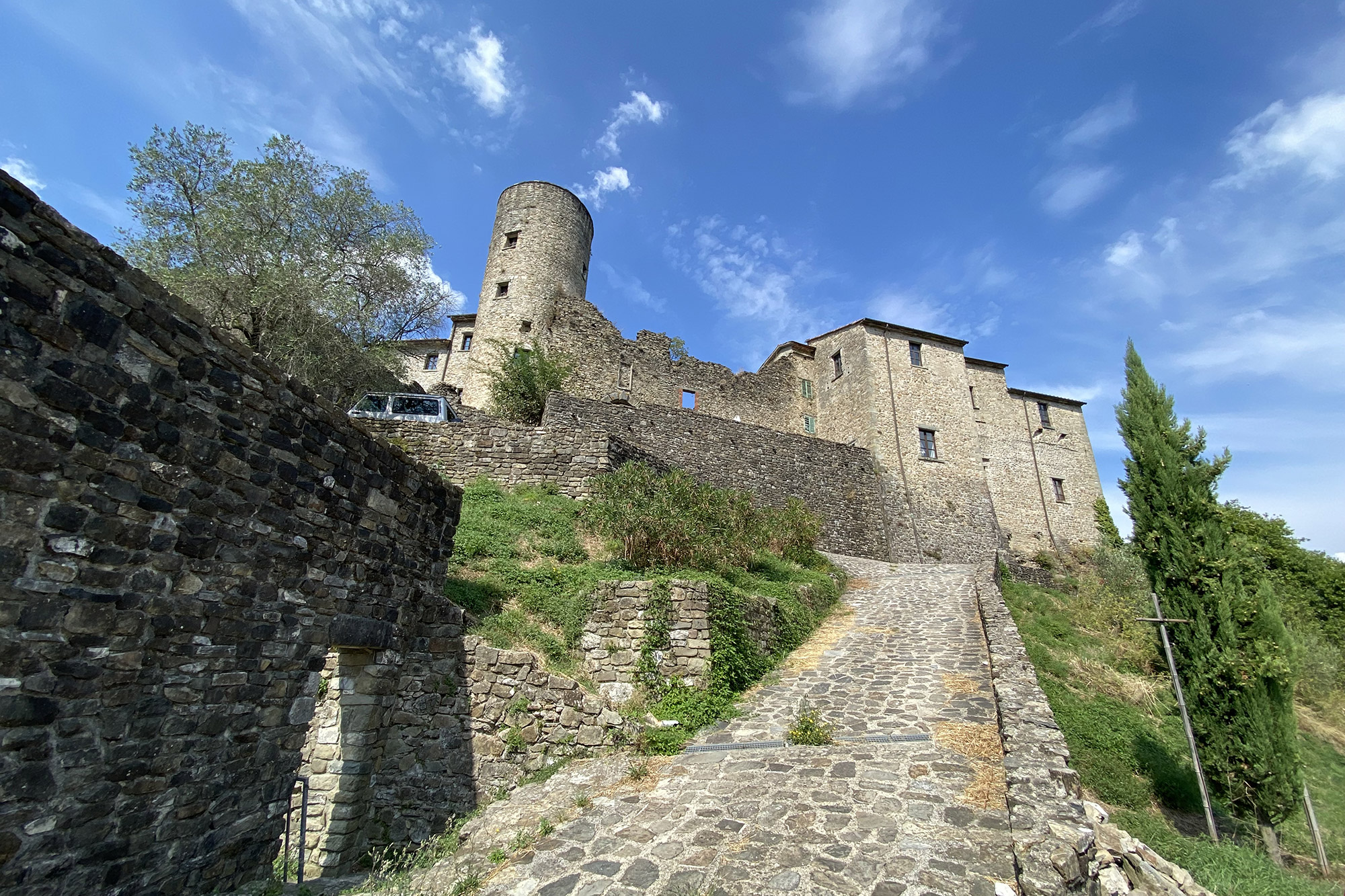
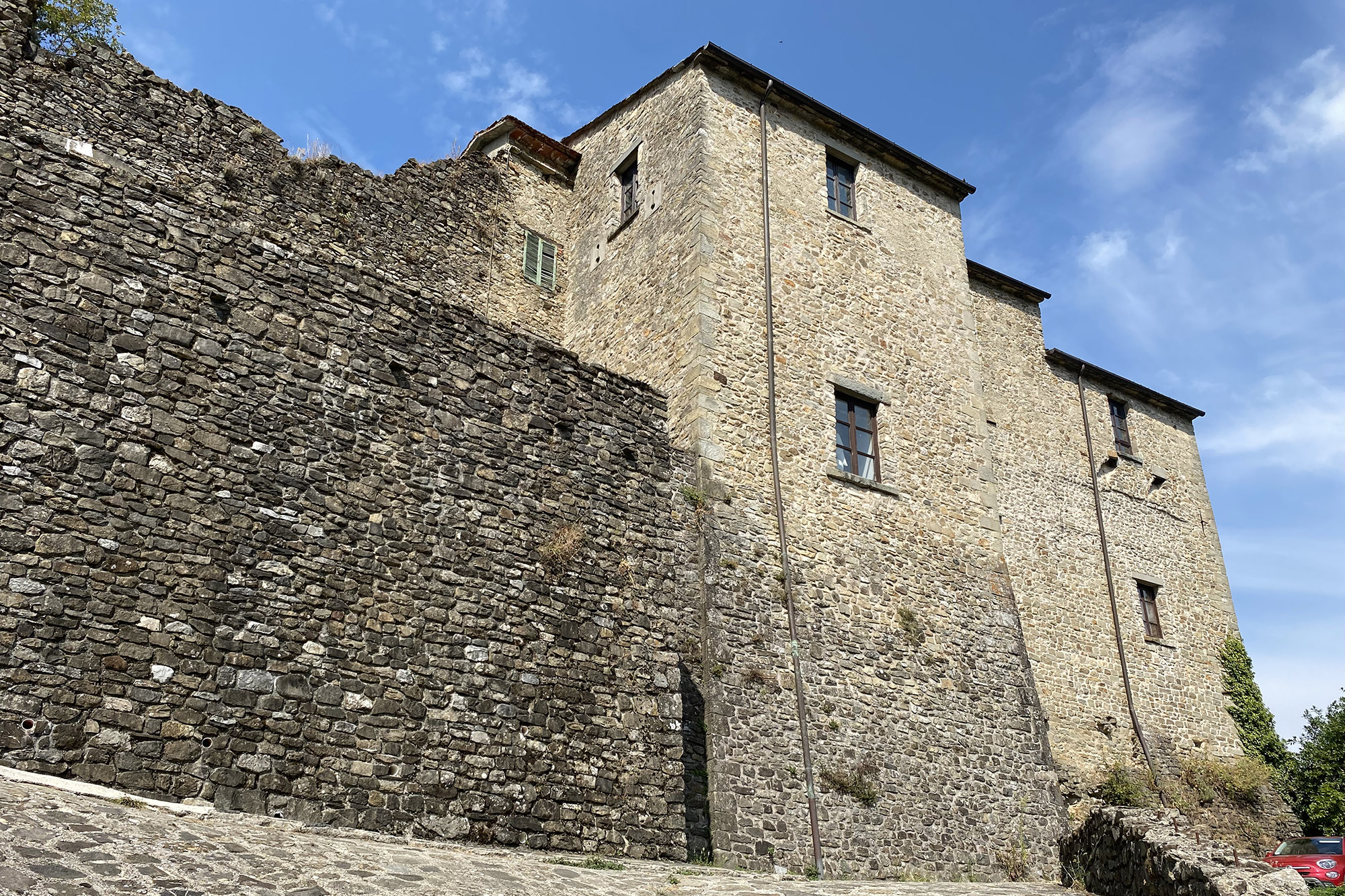
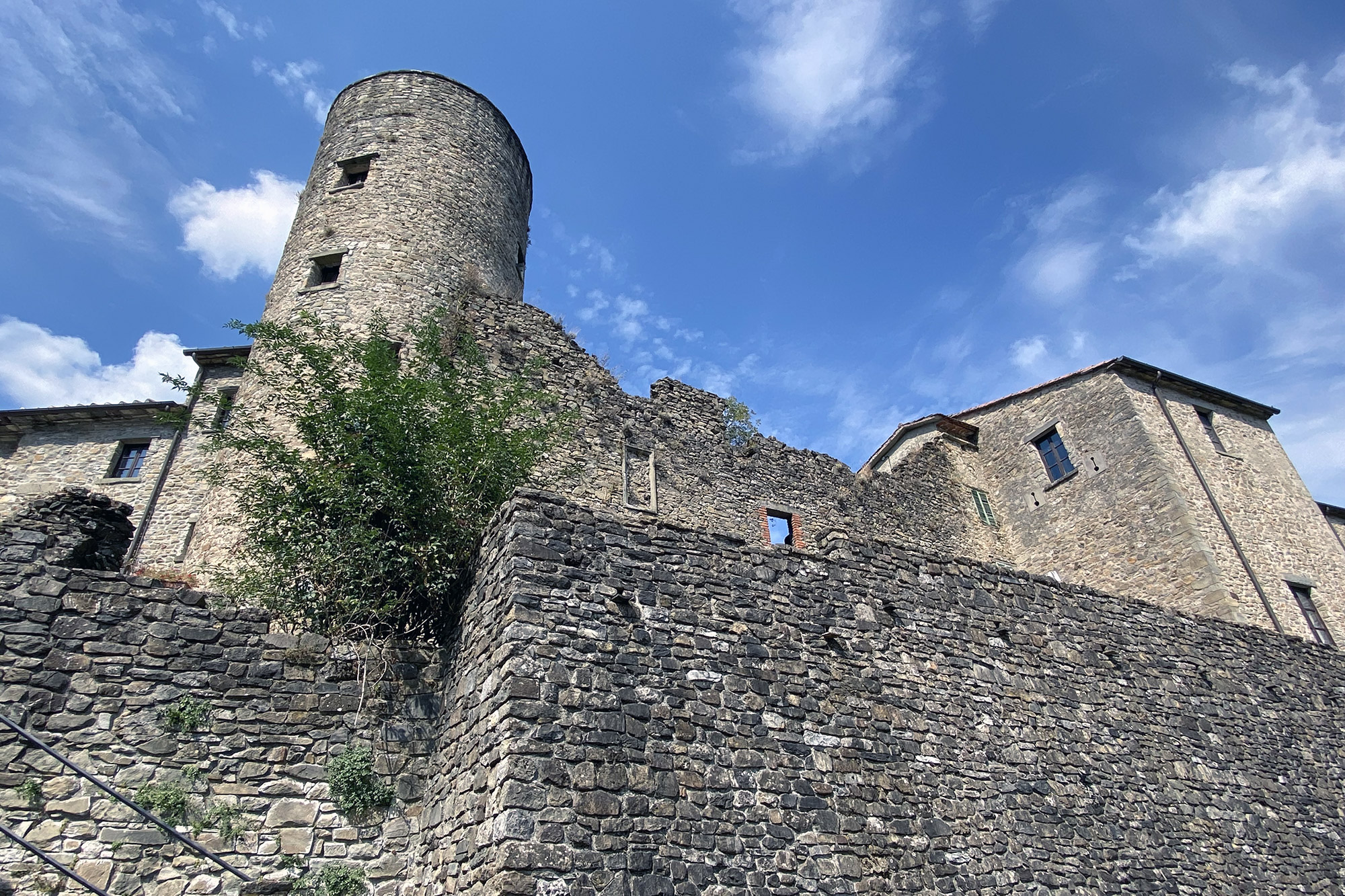
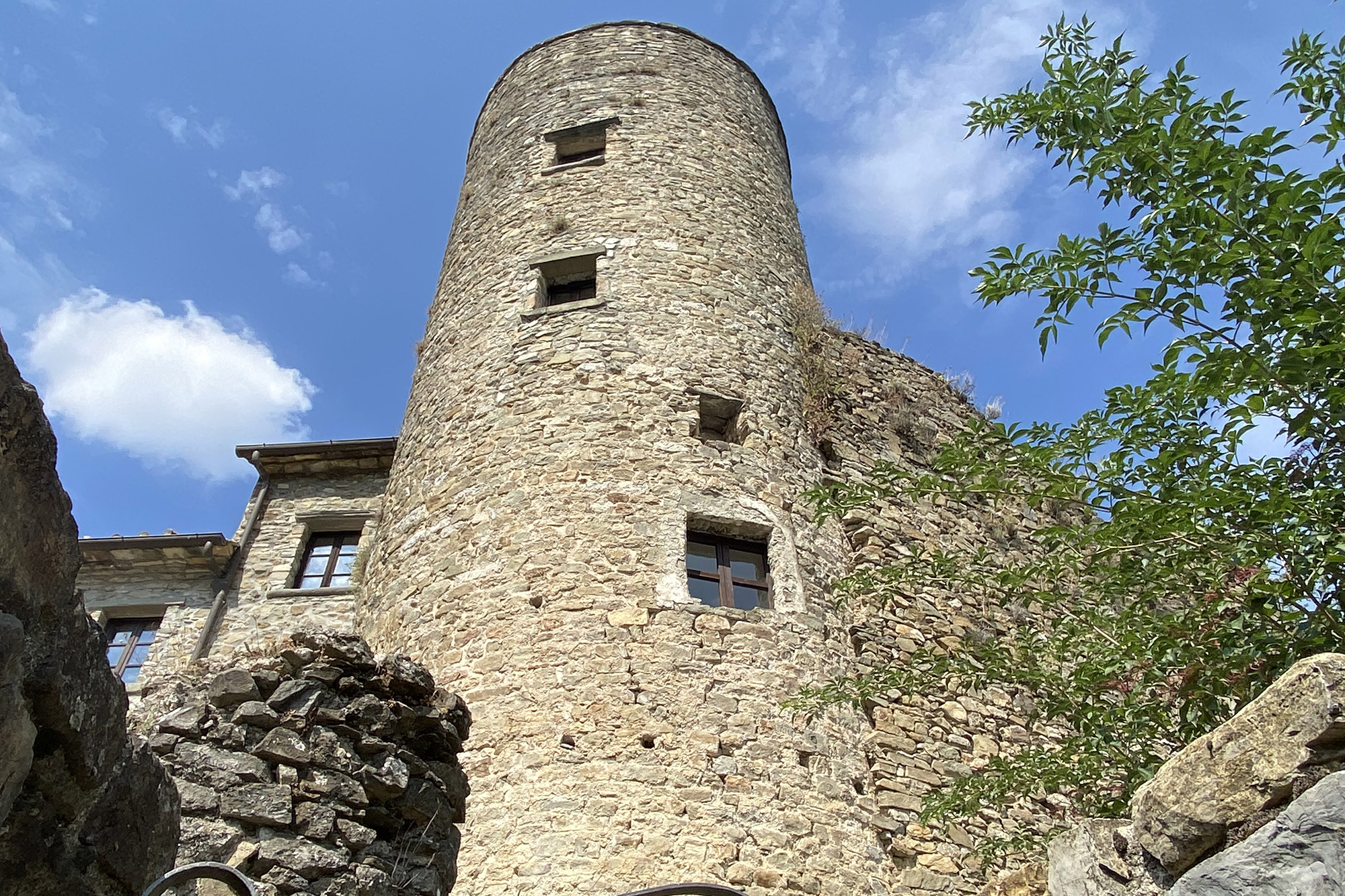
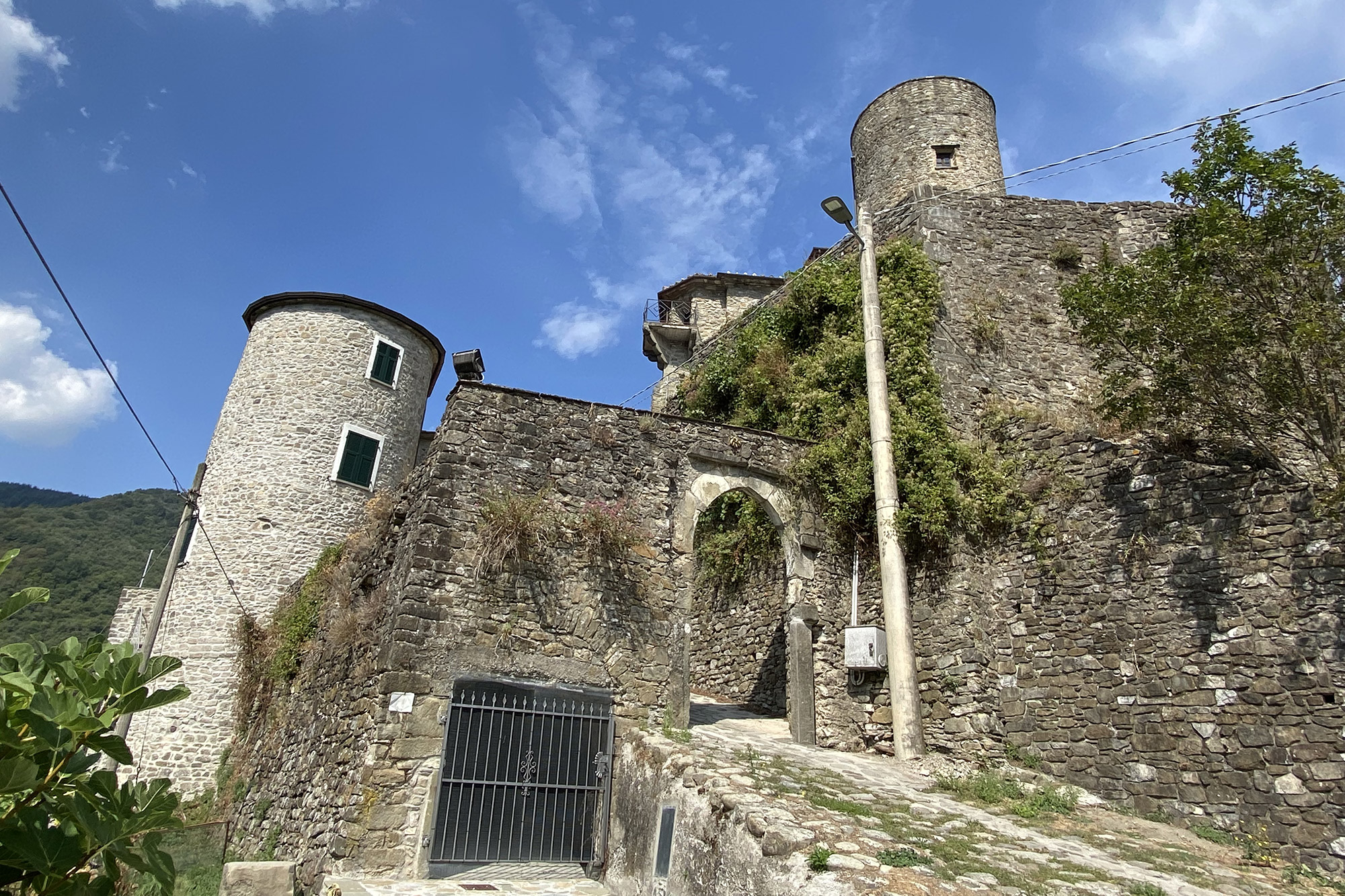
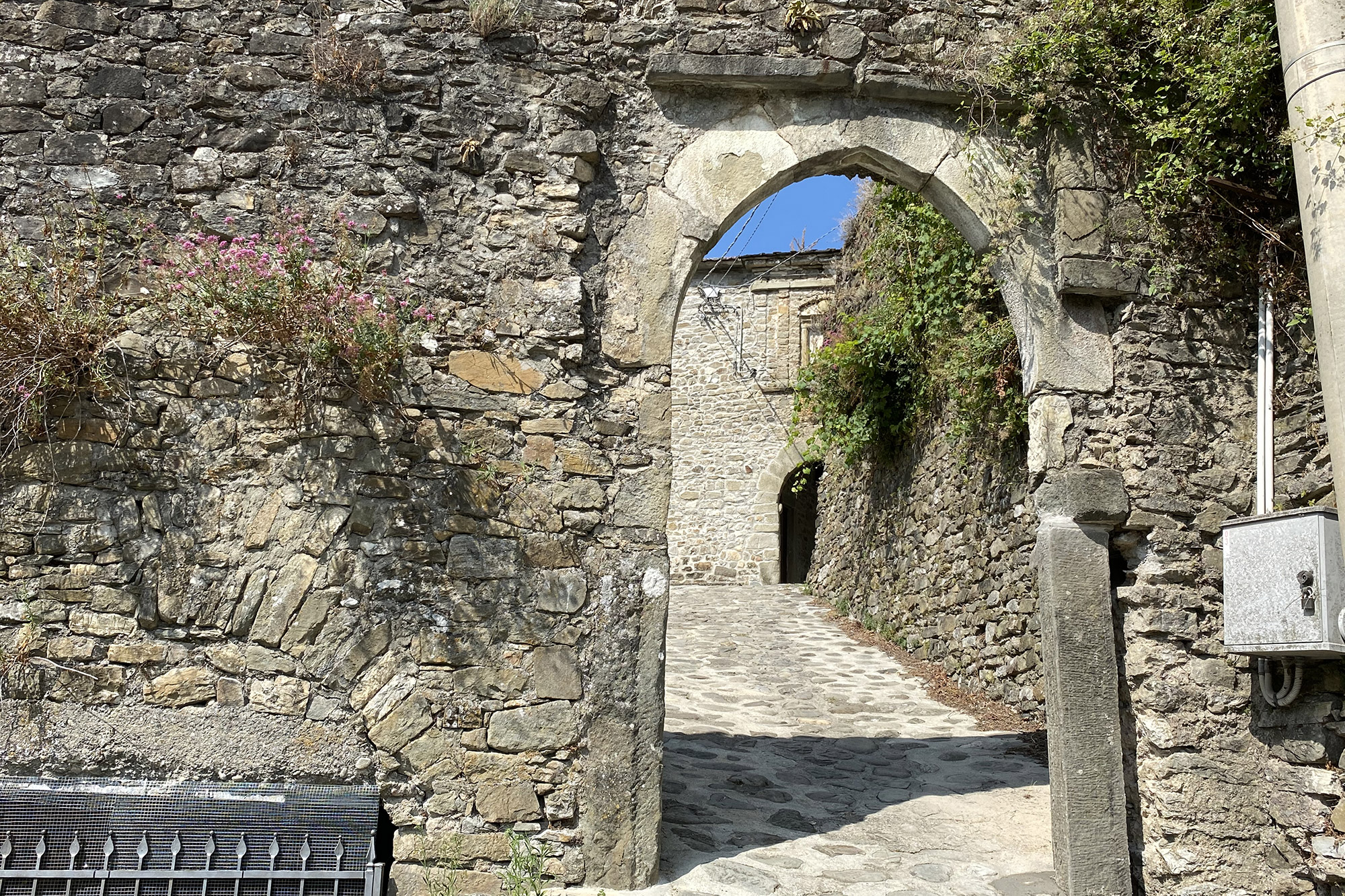
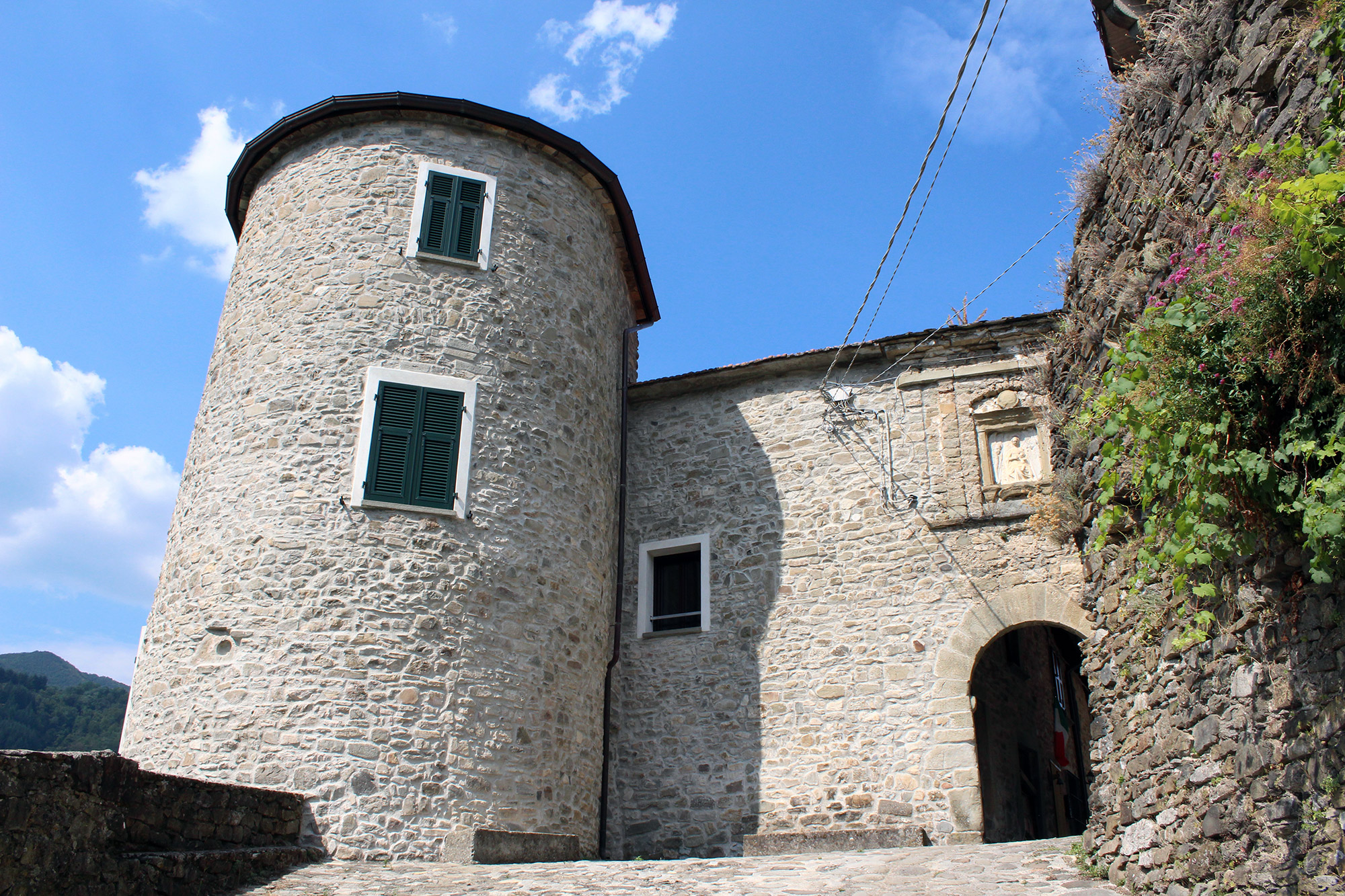
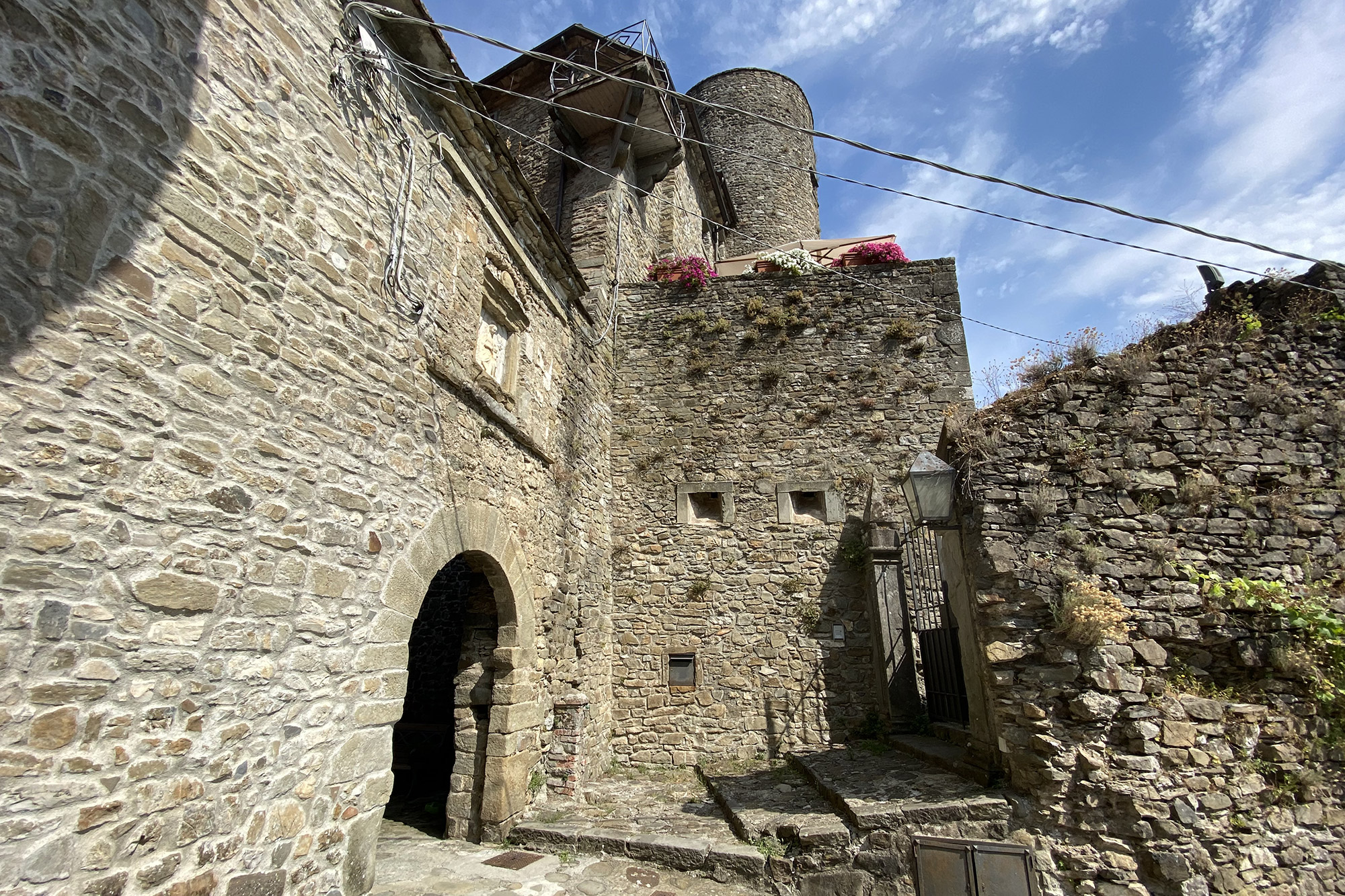
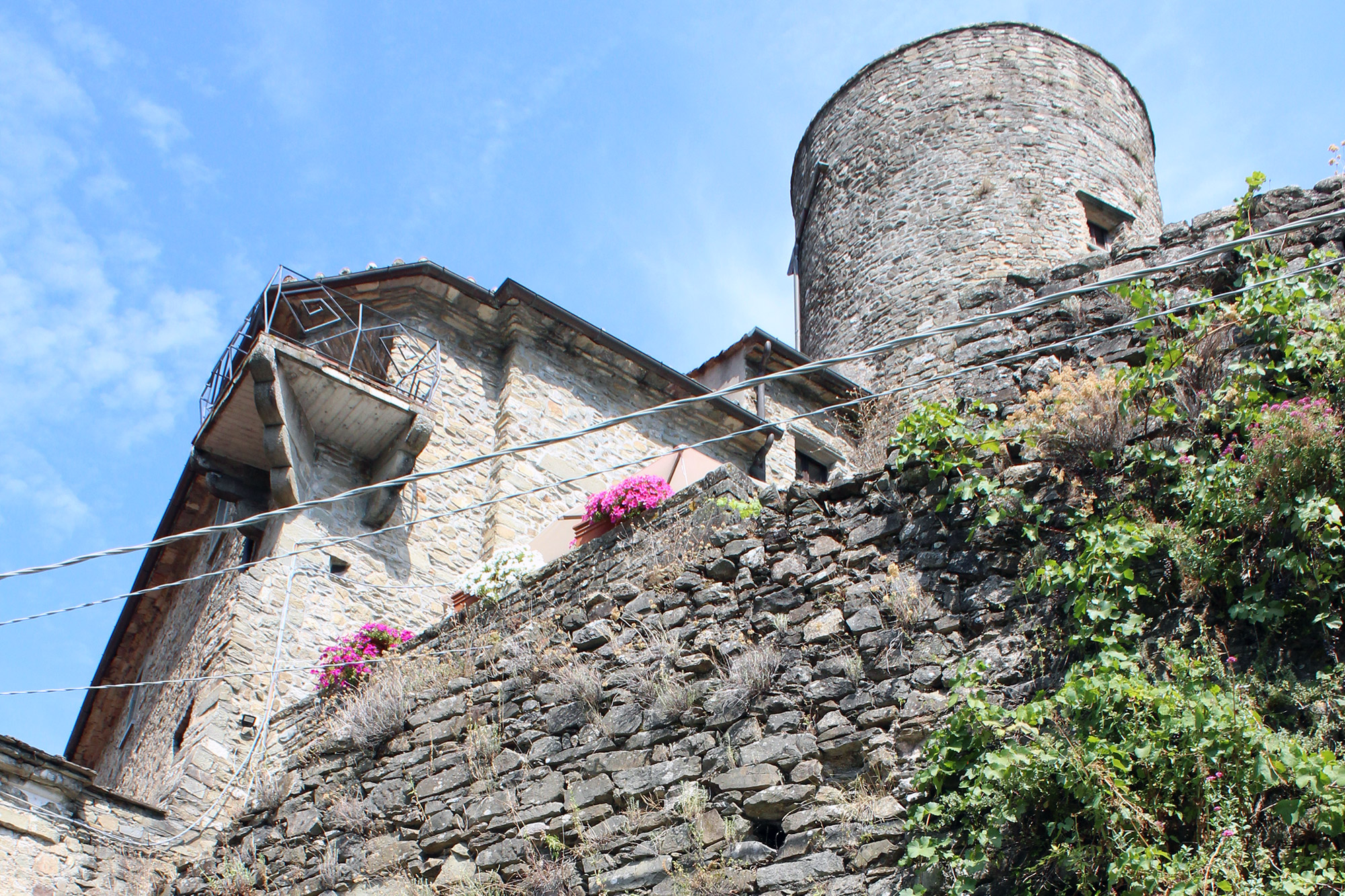
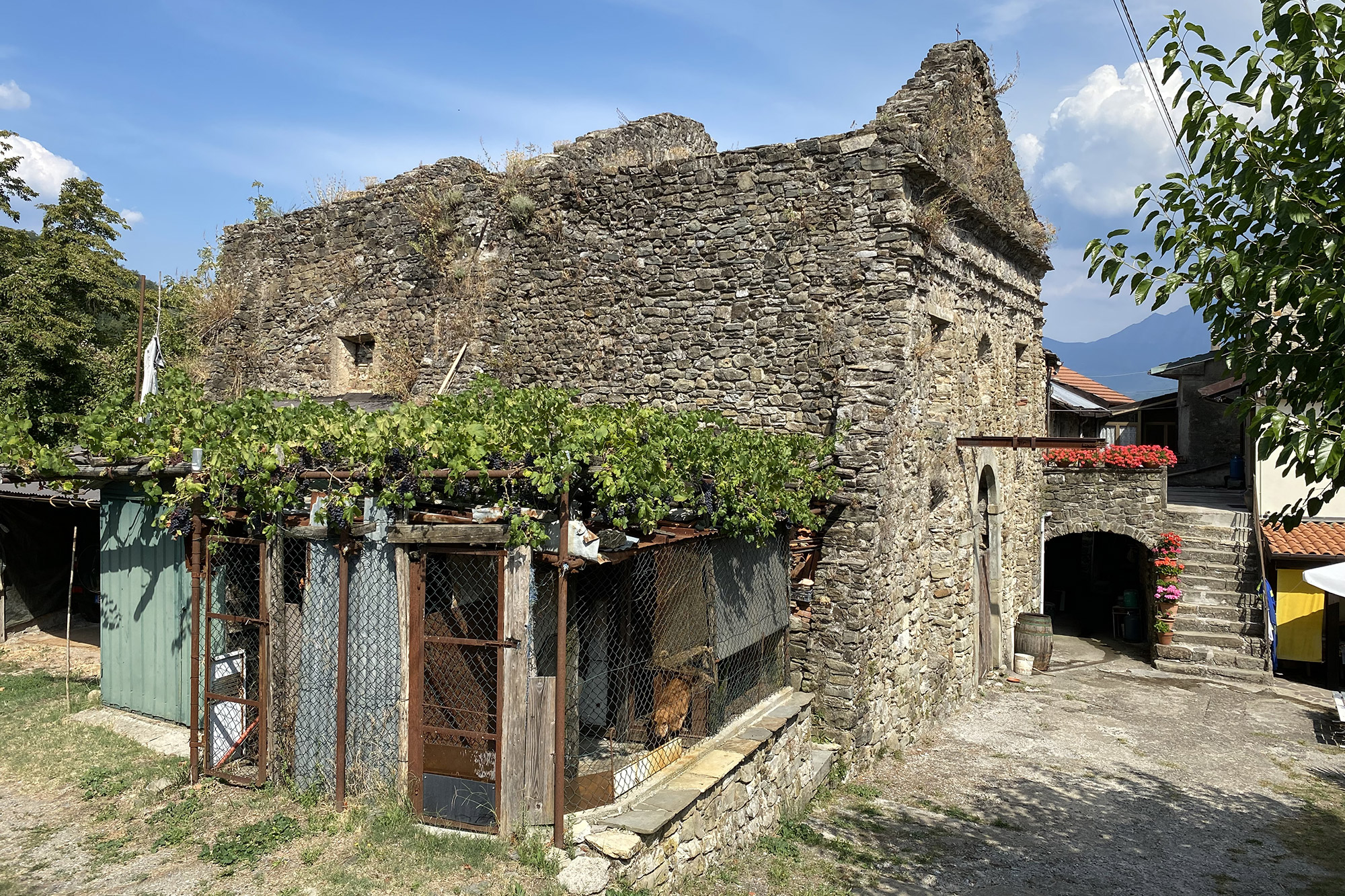
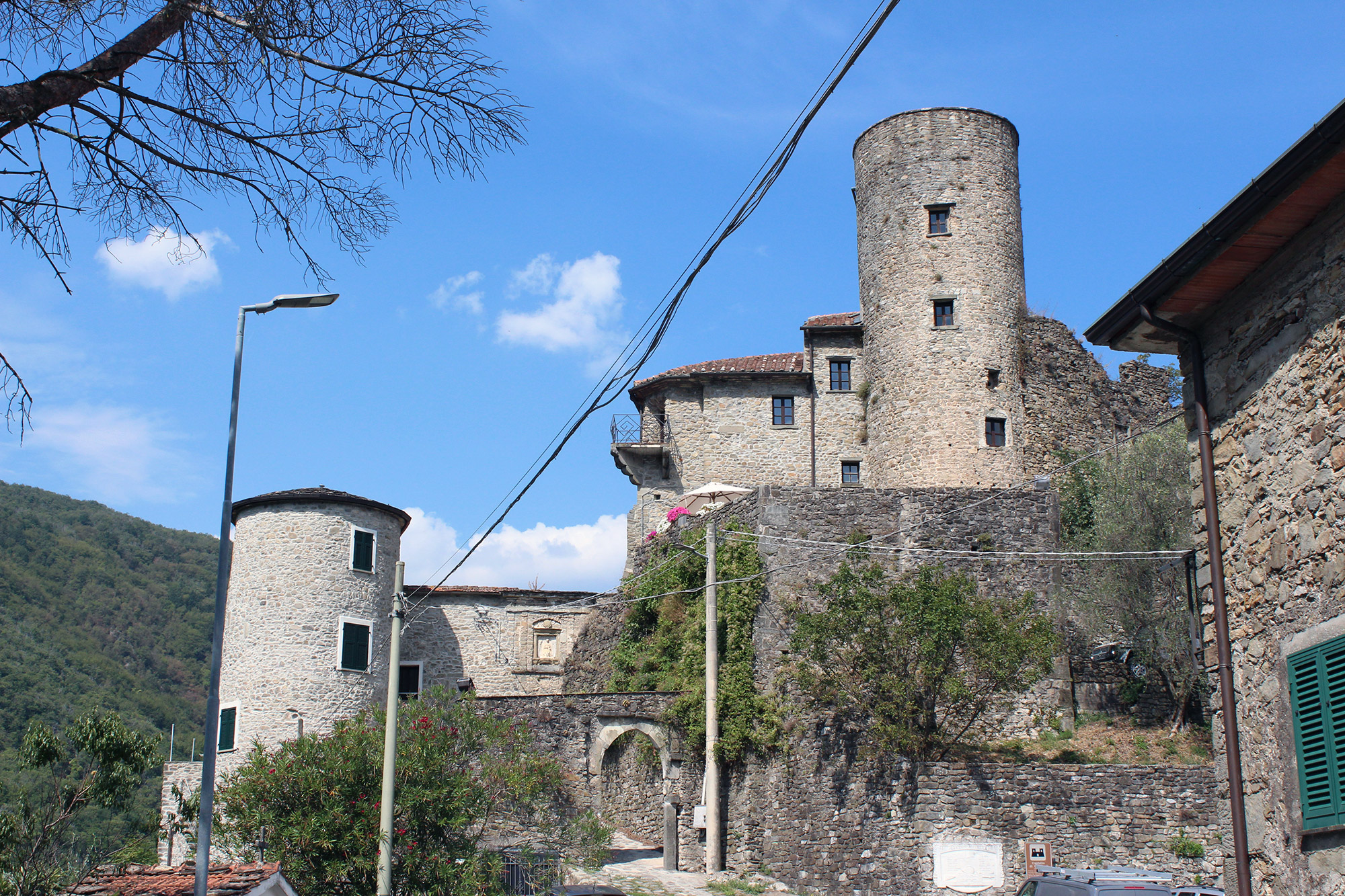

















How to reach
Castevoli can be reached following the A15 Cisa motorway until the exit 'Pontremoli', then following the signs for Mulazzo (SP 31). At the roundabout with indication for the main town, go straight on towards Ponte Magra / Villafranca in Lunigiana until you reach the junction, after about 3.6 kilometres on the right, for Costa d'Arzola / Castevoli. Six more kilometres and you will be under its walls.
History
The village of Castevoli, dominated by the feudal castle, owes its name to the toponym "Casteolo", which means walled land, is a hamlet of the municipality of Mulazzo between the Apuan Alps and the Apennines, sited on a hill between Lusuolo and Groppoli in the heart of a secondary valley on the left side of the Magra river, once crossed by the ancient Roman road to Piacenza. It is assumed that the castle was built as a small fortress to guard this important route of communication, which later became a strategic point to control the roads that, along this side of the Magra Valley, continued towards Chiesaccia and Terrarossa. The first records of the fortification date back to 1077, when Emperor Arrigo III granted the village to the Marquises Ugo and Folco d'Este, heirs of the Obertenghi as the Malaspina family, to whom Castevoli became a possession in 1221 with the division between the cadet branches of the Spino Secco, with dominion over the left side of the Val di Magra, and the Spino Fiorito.
The village is characterised by an entrance protected by two gates and a massive cylindrical stone tower. On the inner door is a walled-in bas-relief composed of three parts depicting the Madonna in marble with two sandstone angels on either side. The castle is dominated by a high cylindrical tower, in the typical architectural style of Malaspina castles, and the keep. The two bodies of the building are linked together in a compact organism in which there is a fine gateway, with an arch decorated with ashlar elements, leading to the large pseudo-triangular internal courtyard. The west wing is imposing and was once equipped with an angular garitte, of which some of the stone corbels that supported them are still visible.
After having been part of the Republic of Genoa, Castevoli became an independent fief in 1561, and the castle underwent major renovations that gave it the appearance, still clearly recognizable today, of an elegant fortified residence carried out by its first Marquis, Tommaso II Malaspina, and his wealthy wife, Bianca Sicchi d'Aragona. His son Francesco, who succeeded him in 1603, completed the work and turned Castevoli into a well planned feudal village, with an imposing central residence and a fortified wall enclosing the village houses. The fief was extinguished in 1757, and Castevoli passed to the Marquises of Villafranca.
History tells us of numerous revolts, caused by the excessive work required and the massive imposition of taxes on the population by the Marquis Tommaso di Villafranca, which led to rebellions that lasted until 1797, the year in which the rule of the Malaspina family over the territory ended. From this moment on, also because of the damage suffered during the subsequent French invasion, the castle remained in a state of abandonment, and only in 1991 did it begin its restoration thanks to the painter Loris Nelson Ricci and his wife Erica End, who made it possible to reopen the castle in 1998. The castle houses an International Art Cultural Center and contains paintings, statues, and architectural designs. The church inside the hamlet predates the construction of the castle, but in 1948 the roof collapsed, making the structure unfit for use; today it is in an obvious state of decay, although some frescoes are still visible inside.
More info & notes
Drone Photos by Paola Zirattu - https://www.instagram.com/paola_zirattu/